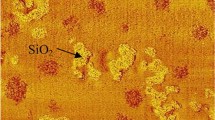Abstract
Thermosetting resins such as epoxy and polyimide are widely used as matrix materials in organic composite systems. These polymers are inherently brittle materials, poor in their resistance to the growth of internal flaw and the propagation of crack. A practice in the industry is to add elastomeric particles to the brittle matrix in order to enhance the resin toughness. The mechanisms for this enhancement are only recently understood as involving triaxial dilatation of rubber particles at the crack-tip, particle elongation and matrix plastic flow. However, when such a modified resin system is used in a fiber-reinforced composite, the effects of these additive particles on the mechanical properties of the composite have not been clear. In this paper, both the fracture behavior and mechanical properties balance of such composite systems will be discussed, based on the results of an extensive experimental study.
A series of acrylonitrile-butadiene modified epoxy polymers were used in the study. Resin fracture energies were determined by using standard compact tension specimens and the hod impact specimens. The elastomeric modifiers greatly increased the fracture energy of the base epoxy, and the extent of this increase depended on the weight percentage and the molecular weight of the CTBN additives. Post-failure fractography was also carried out to examine the system morphology for the identification of the basic mechanism of toughening.
Composite laminates were prepared using both 7781 glass and T300/3K graphite reinforcements. Short beam shear tests were performed to evaluate interlaminar shear strength, which is known to be a matrix-dominated property. Mechanical properties, as measured by 200 °FSBS, are correlated with resin fracture energy. Enhanced toughness is seen to always couple with trade-offs in strength and modulus. It also shows that the short beam shear test gives the interlaminar shear strength of the composite sample, but not the interlaminar fracture energy.
Flexural fatigue study was also performed on laminate samples. Failure took place in an interlaminar shear mode to cause delamination propagation. Elastomer-modified resins, when used in composite, were found to increase the laminate fatigue life by a factor of 10. Fatigue data for the modified system also showed less scattering. Both these effects indicated that the modified composite systems would offer a considerably higher design limit for fatigue, with a trade-off in static strength.
The precipitation of the second phase, along with the high molecular weight modifiers, has a dramatic effect on controlling process rheology. The resulting laminates have reduced (or zero) voids and the matrix possesses adhesive properties for one shot bondable honeycomb sandwich structures. Future composites will require higher strain/failure values without mechanical sacrifice at service temperature in a saturated condition. Improved ‘toughness’ versus mechanical strength matrix resins, combined with higher strain fibers, will be needed for future aircraft composites.
Access this chapter
Tax calculation will be finalised at checkout
Purchases are for personal use only
Preview
Unable to display preview. Download preview PDF.
Similar content being viewed by others
References
Buss, N., Technical Report AFML-TR-68-286, Part I, September,.1968. AFML-TR-69-238, Part II, January, 1970.
Bascom, W. D., Bitner, J. L., Moulton, R. J. and Siebert, A. R., Composites, 1 (1980) 9.
Miller, A. and Hertzburg, P. E., Toughness testing of composite materials, S.A.M.P.E. preprints, October, 1980, Tech. Conf., Seattle, WA.
Bascom, W. D., Moulton, R. J. and Ting, R. Y., The fracture of an epoxy polymer containing elastomeric modifiers, Journal of Materials Science. (In press.)
Ophir, Z. H., Emerson, J. A. and Wilkes, G. L., Sub-annealing studies of rubber-modified and unmodified epoxy systems, J. Appl. Phys., 49(10) (October, 1978).
Chamis, C. C., Hanson, M. P. and Serafini, T. T., Modern Plastics, 5 (1973) 90.
Bascom, W. D., Moulton, R. J., Rowe, E. H. and Siebert, A. R., ACS Organic Coating and Plastics Preprint, 39 (1978) 164.
Buchnell, C. B. and Smith, R. R., Polymer, 6 (1965) 437.
Mostovoy, S. and Ripling, E. J., Appl. Polymer Sym., 19 (1972) 395.
Manzione, L. T., Gillham, J. K. and Mcpherson, C. A., Rubber-modified epoxies: Transitions and morphology, Princeton Univ. NJ Dept. of Chemical Engineering, 1 September, 1980.
Wogulis, S. G., Whitney, B. W. and Ireland, D. R., Automated data acquisition and analysis for the instrumented impact test, Effects Technology Technical Report TR-78-13, 1979.
Lee, B. L., Lizak, C. M., Riew, C. K. and Moulton, R. J., Rubber toughening of tetrafunctional epoxy resin, S.A.M.P.E. preprints, December, 1980.
Siebert, A. R. and Rowe, E. H., Paper presented at the 161st ACS Mtg. Org. Coat. Plast. Div., Los Angeles, CA, USA, 1971.
Ting, R. Y. and Moulton, R. J., S.A.M.P.E. Tech. Ser., 12 (1980) 265.
Bascom, W. D. and Cottington, R. L., J. Adhesion, (1976) 333.
Christensen, R. M. and Wu, E. M., Optical design of anisotropic (fiber-reinforced) flywheels, Lawrence Livermore Laboratory, November, 1976.
Author information
Authors and Affiliations
Editor information
Editors and Affiliations
Rights and permissions
Copyright information
© 1981 Applied Science Publishers Ltd
About this chapter
Cite this chapter
Moulton, R.J., Ting, R.Y. (1981). Effects of Elastomeric Additives on the Mechanical Properties of Epoxy Resin and Composite Systems. In: Marshall, I.H. (eds) Composite Structures. Springer, Dordrecht. https://doi.org/10.1007/978-94-009-8120-1_46
Download citation
DOI: https://doi.org/10.1007/978-94-009-8120-1_46
Publisher Name: Springer, Dordrecht
Print ISBN: 978-94-009-8122-5
Online ISBN: 978-94-009-8120-1
eBook Packages: Springer Book Archive




